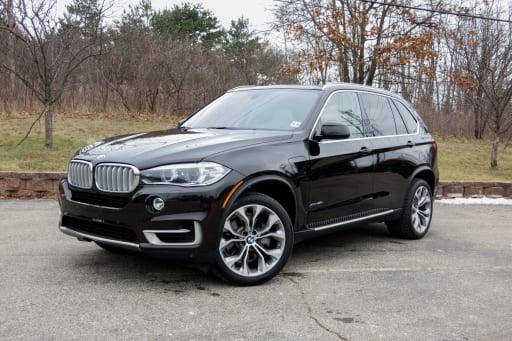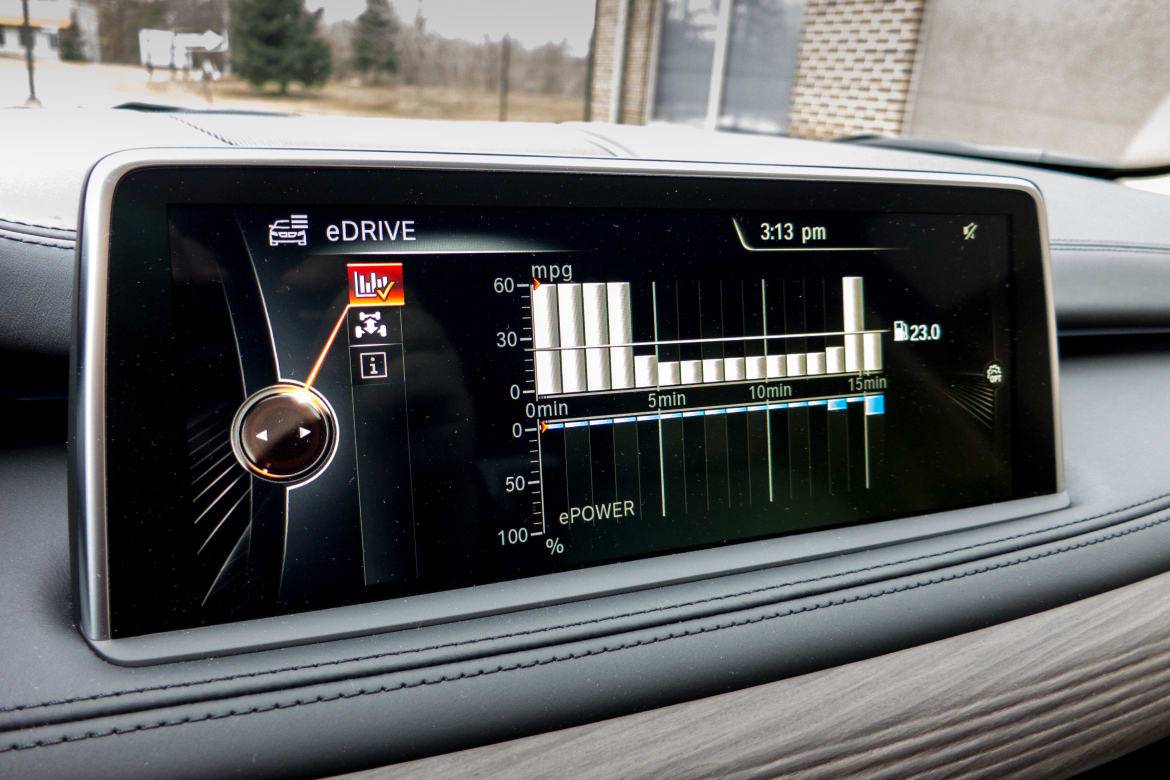Is the 2016 BMW X5 Plug-In Hybrid a Good Trade Up From a Chevy Volt?


CARS.COM — As a hard-core auto enthusiast, I’m always thinking about my next car. As the owner of two successive Chevrolet Volts, and a fan of doing 90 percent of my commuting and errands in electric-only mode, I’m always looking for a vehicle that can match the Volt’s efficiency. Moving up to something nicer with more passenger and cargo room would be great, but there hasn’t been a vehicle yet that matches the Volt’s economy and offers more room and luxury amenities. How does BMW’s plug-in hybrid SUV, the 2016 X5 xDrive40e, measure up?
Related: Research the BMW X5
Like the Volt, the X5 xDrive40e can operate in a fully electric mode; the automaker says it has 14 miles of electric range before switching on the gas engine. It pairs a 245-horsepower, turbocharged 2.0-liter four-cylinder with an electric motor for a full-system horsepower rating of 308 hp and 332 pounds-feet of torque. It’s mated to something unusual in a hybrid — a traditional eight-speed automatic transmission.
It offers a lot more room, comfort, amenities and luxury-brand cachet than the Volt (for an admittedly larger price tag). With my other half using the Volt for a commute of 20 miles round trip and charging overnight, I put the BMW through its paces to see if it could realistically offer all its extras and maintain the level of electric-vehicle operation that we’ve come to truly enjoy.

Driving the X5 xDrive40e for a week, I never once approached 14 miles of electric-only operation, despite trying to extend the battery life as much as possible. When first powering the car on, you have to select “Max eDrive” mode using the drive mode selector, which keeps the X5 in electric mode and makes it operate like a Volt — otherwise it defaults to a hybrid mode, which employs the gasoline engine more frequently and before the battery is empty. The other two modes are “Auto eDrive,” which operates the X5 like a traditional hybrid, and “Save Battery,” which intentionally runs the motor to save charge for later or even builds charge in a depleted battery.
Operating the X5 in EV mode, I found it to have reasonable performance around town but limited in its acceleration at higher speeds — you would not want to operate it at highway speeds in electric-only mode. Despite keeping the climate control off and acceleration under control, I never got anywhere near the 16 miles of EV range its in-dash display told me it had on a full charge, 2 more than it’s rated for. Instead, it maxed out at 8 to 9 miles on each drive.
Charging the empty battery on my home’s 240-volt system took about 3 hours. I drove the X5 145 miles over the week, and the onboard computer told me I’d been averaging 24 mpg, including time spent in EV mode; my own measured fuel consumption confirmed it. This is also what the EPA has rated the X5 plug-in to achieve.
The added weight of the hybrid system and battery affects braking performance. Instead of the firm, confident behavior one expects from a BMW, the X5 xDrive40e’s brakes have a mushier sensation. Steering feel is also fairly numb in Normal mode, but firms up in Sport mode (all of the normal BMW Dynamic Driving modes are available: Normal, EcoPro, Sport and Sport Plus).
In terms of space, it has far more of it than a Chevy Volt and is much more comfortable overall with better visibility, cargo space and seating comfort. But as a plug-in hybrid, it offers far less electric range than the Volt. So if you like the mostly electric operation of the Volt but are looking for something with more room, amenities, comfort and capacity, you’ll still have to wait for something with this magic combination. While the X5 xDrive40e is a fine machine, it’s not quite the upgrade many Volt owners are hoping for.

Detroit Bureau Chief Aaron Bragman has had over 25 years of experience in the auto industry as a journalist, analyst, purchasing agent and program manager. Bragman grew up around his father’s classic Triumph sports cars (which were all sold and gone when he turned 16, much to his frustration) and comes from a Detroit family where cars put food on tables as much as smiles on faces. Today, he’s a member of the Automotive Press Association and the Midwest Automotive Media Association. His pronouns are he/him, but his adjectives are fat/sassy.
Featured stories



